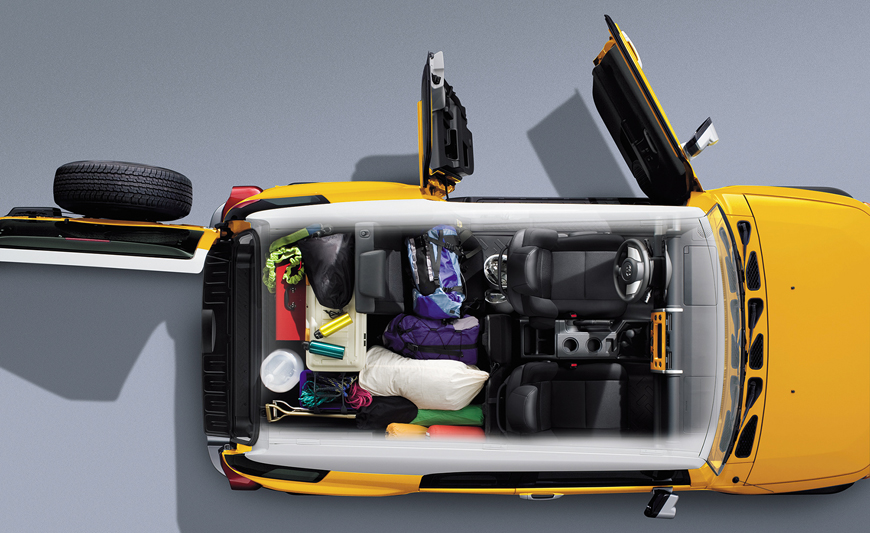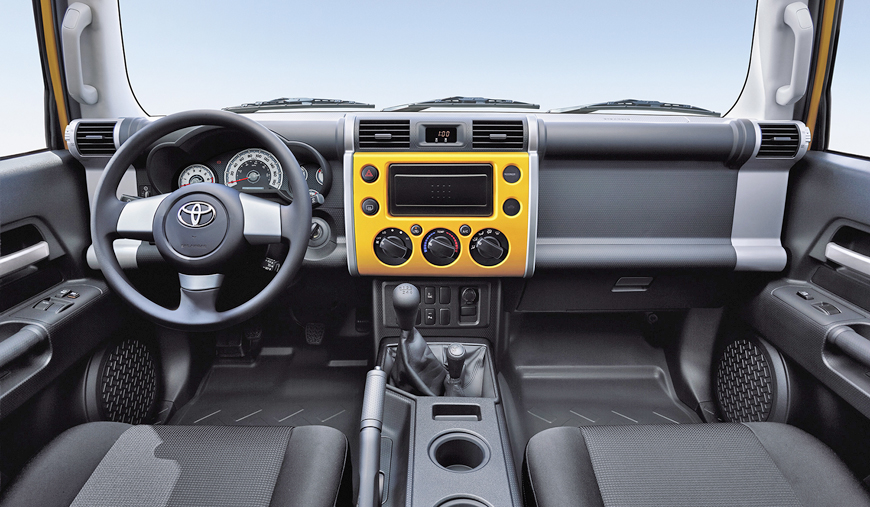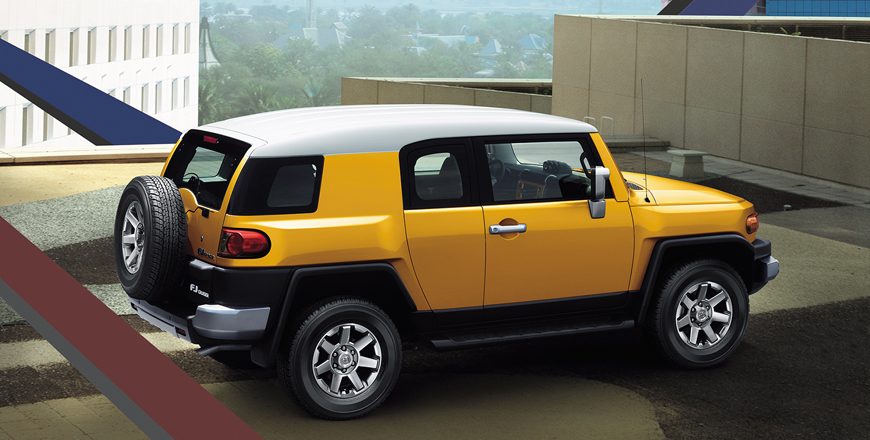First launched in 2006, the Toyota FJ Cruiser was a re-interpretation of past glory through rose-tinted glasses. Since then, it has itself become nostalgic slice of pre-global recession 2000s design, tech and engineering sensibilities.
As capable an off-roader as ever, the FJ Cruiser’s heavily stylised design, unconventionally accessible doors and sense of adventure made it Toyota’s only “fun” vehicle at a time when the Japanese brand was renowned for its practical, reliable and thoroughly sensible, but mostly uninspiring product portfolio.
Resilient re-interpretation
Predating other “fun” enthusiast-oriented Toyotas like the Supra, GR 86, Yaris GR and anticipated Corolla GR, the FJ Cruiser is still selling in certain markets, including parts of the Middle East. A long-running model that has seen very mild and gradual updates rather than outright replacement, the FJ Cruiser’s big displacement naturally-aspirated engine and uncomplicated technology add-ons makes it a breath of fresh air and antidote to overly-complicated and tech-laden cars that lack the driver-involvement, purposefulness, clarity and sense of connection of their predecessors.
Launched when stylised retro designs were the trend from small runarounds like the Fiat 500 to supercars like the Ford GT, the FJ Cruiser’s design harked back to the Toyota Land Cruiser FJ40, with its bulbous extremities, tapered bonnet, round headlights, exaggerated wraparound indicators and upright cabin. Sitting wide and high off the ground, the FJ Cruiser’s playfully retro-futuristic interpretation was, however, accentuated by its wide B-pillar, high waistline and low glasshouse that lent it a more squat and wide stance.

Incremental improvement
Powered by naturally-aspirated engine with smooth, progressive delivery, the FJ Cruiser’s venerable 4-litre V6 engine initially produced 239BHP at 5,200rpm at launch, but has since seen the introduction of dual variable valve technology by 2011 and incremental power hikes to the current 268BHP achieved at a higher 5,600rpm. Responsive and eager through revs, the FJ’s engine also produces a healthy mid-range torque band with a 280lb/ft peak at 4,400rpm, which allows it to carry its upright body through air resistance to a 175km/h maximum.
Slightly heavier at 2,065 kg, the latest FJ Cruiser is nevertheless confidently versatile and reasonably brisk in performance, with 0-100km/h arriving in an estimated 8-seconds or less, while combined fuel consumption is estimated at a not too thirsty 11.6l/100km. Driving the rear wheels through a smooth-shifting 5-speed automatic gearbox under normal on-road conditions, the FJ’s four-wheel-drive can be engaged for low traction off-road and snow conditions, while high power crawling pace low gear four-wheel-drive is available for more demanding terrain.
Rigid and refined
Best in manual gearbox guise where it receives a centre Torsen differential that allows full-time variable and locking four-wheel-drive for on-road and off-road driving the automatic FJ Cruiser is nevertheless a highly capable off-roader in most circumstances, with a locking rear differential for additional sure-footed traction. Effortlessly traversing steep inclines, loose gravel, deep ruts and sharp rises, the FJ Cruiser benefits from high 245mm ground clearance and short overhangs, which allow for generous 34° approach, 27.4° break-over and 31° departure angles.
With rugged body-on-chassis construction and rigid rear axle for excellent off-road articulation and durability, the FJ Cruiser is also surprisingly agile and alert changing directions on loose surfaces and dirt tracks, and seemed considerably more connected and responsive in dynamic ability and steering feel than other Toyota SUVs of its vintage. Manoeuvrable and light-footed for an SUV of its weight, the FJ Cruiser’s body and construction seemed reassuringly rigid and free of rattles, squeaks, excessive flex or suspension imprecision.

Accessibly utilitarian
Stable and refined on road, the FJ Cruiser rides slightly firm, even with absorbent high sidewall 265/70R17 tyres. However, this translates into better than expected cornering body control for a vehicle of this height and weight. Dispatching rough road surfaces and large bumps in its stride, the FJ’s double wishbone front suspension is sophisticated and smooth, while its rugged rear axle is tempered by more refined and precise coil springs rather than leaf springs, and delivers a settled ride quality.
A stylised and unambiguous adventure-wagon, the FJ Cruiser’s cabin reflects its utilitarian appeal with big, user-friendly buttons, dial and levers, and clear instrumentation. Functional and unpretentious, its cabin incorporates rubberised surfaces and water resistant upholstery for easy cleaning. With long front and small rear hinged rear doors, the FJ Cruiser provides excellent, un-obstructed cabin access, generous front, very accommodating rear and maximum 990-litre cargo space, with rear seats folded. Visibility is decent, while improved equipment includes an Android Auto and Apple Carplay enabled 12-inch screen infotainment system.
TECHNICAL SPECIFICATIONS
Engine: 4-litre, in-line, V6-cylinders
Bore x Stroke: 94 x 95mm
Compression ratio: 10.0:1
Valve-train: DOHC, 24-valve, variable timing
Gearbox: 5-speed automatic
Drive-line: four-wheel-drive, low ratio transfer, rear differential lock
Gear ratios: 1st 3.52:1; 2nd 2.042:1; 3rd 1.4:1; 4th 1.0:1; 5th 0.716:1
Reverse/final drive: 3.224:1/3.727:1
Power, BHP (PS) [kW]: 268 (272) [200] @5,600rpm
Specific power: 67.7BHP/litre
Power-to-weight: 129.8BHP/tonne
Torque, lb/ft (Nm): 280 (380) @4,400rpm
Specific torque: 96Nm/litre
Torque-to-weight: 184Nm/tonne
0-100km/h: under 8-seconds (estimate)
Top speed: 175km/h
Fuel consumption, combined: 11.6 litres/100km (estimate)
Fuel capacity: 159-litres
Wheelbase: 2,690mm
Tread: 1,605mm
Ground clearance: 245mm
Approach/break-over/departure angles: 34°/27.4°/31°
Seating: 5
Cargo volume, max: 990-litres
Towing weight, braked/un-braked: 1,500/750kg
Turning circle: 12.4-metres
Suspension, F/R: Double wishbone/live axles, 4-link, coil springs
Brakes: Ventilated discs
Tyres: 265/70R17
